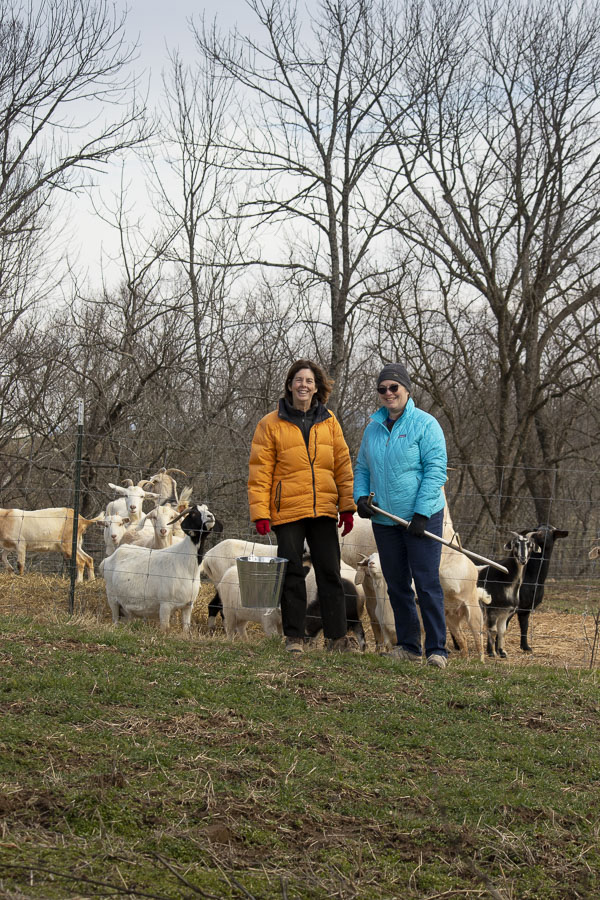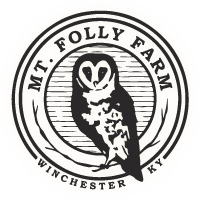This marks my 38th year at Mt. Folly. My mother, who farmed here before me, died this January. My ties to the land run through her, and Rachel Ware Bush before that, then Mattie Ware and Richard Ware before that, back to early settlement in “the beautiful level of Kentucky.” This truly is a family farm, one which has reinvented itself with the times.
For my part, in the early 1980’s, I turned the farm from a tobacco and cow/calf operation to one which raised and sold beef without antibiotics or growth hormones. I worked on this for 25 years, until I had a horse-back riding smash up, which led to the sale of the beef company. But in those years, I made it clear that drug-free cattle were possible, and now meats raised this way are available nationwide.
During my recovery, I learned about the ecological crisis of climate change, and have put together a system of soil carbon sequestration using organic and regenerative agriculture methods, married to a local food system which includes a farm-to-table distillery and restaurant in our small Kentucky town. I got in the hemp business, a new crop which helped me recover.
The model of regenerative agriculture/local food system will be the reinvention for the next 50 years and will be what I leave behind.
This week, Dr. Susan Shore and I have been out measuring soil organic matter, which is 58% carbon. The task is to build soil organic matter through cover crops, no chemicals, minimal tillage, and rotational grazing. The trick is to stabilize the organic matter and keep it in the ground.

We are bootstrapping this now, and it isn’t all peachy keen. Last September, we marked latitude and longitude coordinates in fields which we are farming differently…cover crops, organic crops then hay, pasture, forest land we don’t disturb, and so on then measured organic matter. Thursday, we couldn’t find the soil probe (it was behind a door at the homestead cabin), and then we couldn’t get the coordinates to match up with google maps. (We found the answer to this question the next day. The coordinates were correct; the field names not so much.)
So we worked on different fields, with different treatments: hemp; rye; buckwheat for grain (buckwheat pancakes for brunch at the farm-to-table) rye and vetch, going this year into organic soybeans; a small cattle lot going into a garden for the farm-to-table; a fine field of silt loam with a rye cover to be rolled down, going into organic soybeans; fescue pasture land, until now abandoned, going into an orchard for the distillery, and an organic garden site with a thick rye cover going into sweet potatoes. We’ll publish these numbers when we get results back from the lab, but below are the organic matter numbers from late last summer, the coordinates correct.
Savannah Radmacher, a Berea College Agriculture and Natural Resource Management graduate who is a key player in this effort, measured carbon at two soil depths, 0-6 inches, which is less stable, and 6-12 inches, which is more stable. We were directed to take these measurements by Dr. Drew Smith, scientist at the Rodale Institute’s experimental farm.
Here they are:


